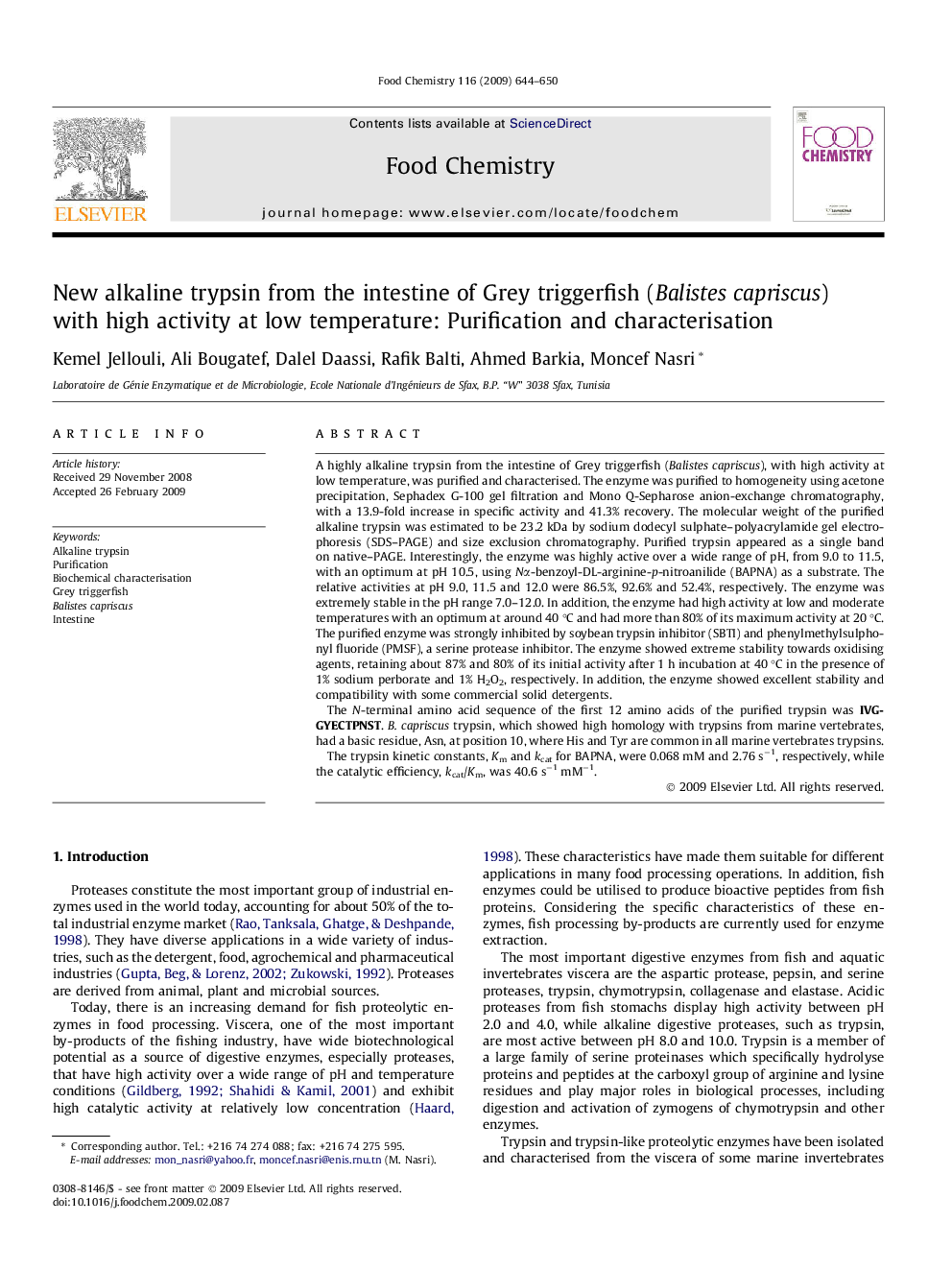| Article ID | Journal | Published Year | Pages | File Type |
|---|---|---|---|---|
| 1185939 | Food Chemistry | 2009 | 7 Pages |
A highly alkaline trypsin from the intestine of Grey triggerfish (Balistes capriscus), with high activity at low temperature, was purified and characterised. The enzyme was purified to homogeneity using acetone precipitation, Sephadex G-100 gel filtration and Mono Q-Sepharose anion-exchange chromatography, with a 13.9-fold increase in specific activity and 41.3% recovery. The molecular weight of the purified alkaline trypsin was estimated to be 23.2 kDa by sodium dodecyl sulphate–polyacrylamide gel electrophoresis (SDS–PAGE) and size exclusion chromatography. Purified trypsin appeared as a single band on native–PAGE. Interestingly, the enzyme was highly active over a wide range of pH, from 9.0 to 11.5, with an optimum at pH 10.5, using Nα-benzoyl-DL-arginine-p-nitroanilide (BAPNA) as a substrate. The relative activities at pH 9.0, 11.5 and 12.0 were 86.5%, 92.6% and 52.4%, respectively. The enzyme was extremely stable in the pH range 7.0–12.0. In addition, the enzyme had high activity at low and moderate temperatures with an optimum at around 40 °C and had more than 80% of its maximum activity at 20 °C. The purified enzyme was strongly inhibited by soybean trypsin inhibitor (SBTI) and phenylmethylsulphonyl fluoride (PMSF), a serine protease inhibitor. The enzyme showed extreme stability towards oxidising agents, retaining about 87% and 80% of its initial activity after 1 h incubation at 40 °C in the presence of 1% sodium perborate and 1% H2O2, respectively. In addition, the enzyme showed excellent stability and compatibility with some commercial solid detergents.The N-terminal amino acid sequence of the first 12 amino acids of the purified trypsin was IVGGYECTPNST. B. capriscus trypsin, which showed high homology with trypsins from marine vertebrates, had a basic residue, Asn, at position 10, where His and Tyr are common in all marine vertebrates trypsins.The trypsin kinetic constants, Km and kcat for BAPNA, were 0.068 mM and 2.76 s−1, respectively, while the catalytic efficiency, kcat/Km, was 40.6 s−1 mM−1.
